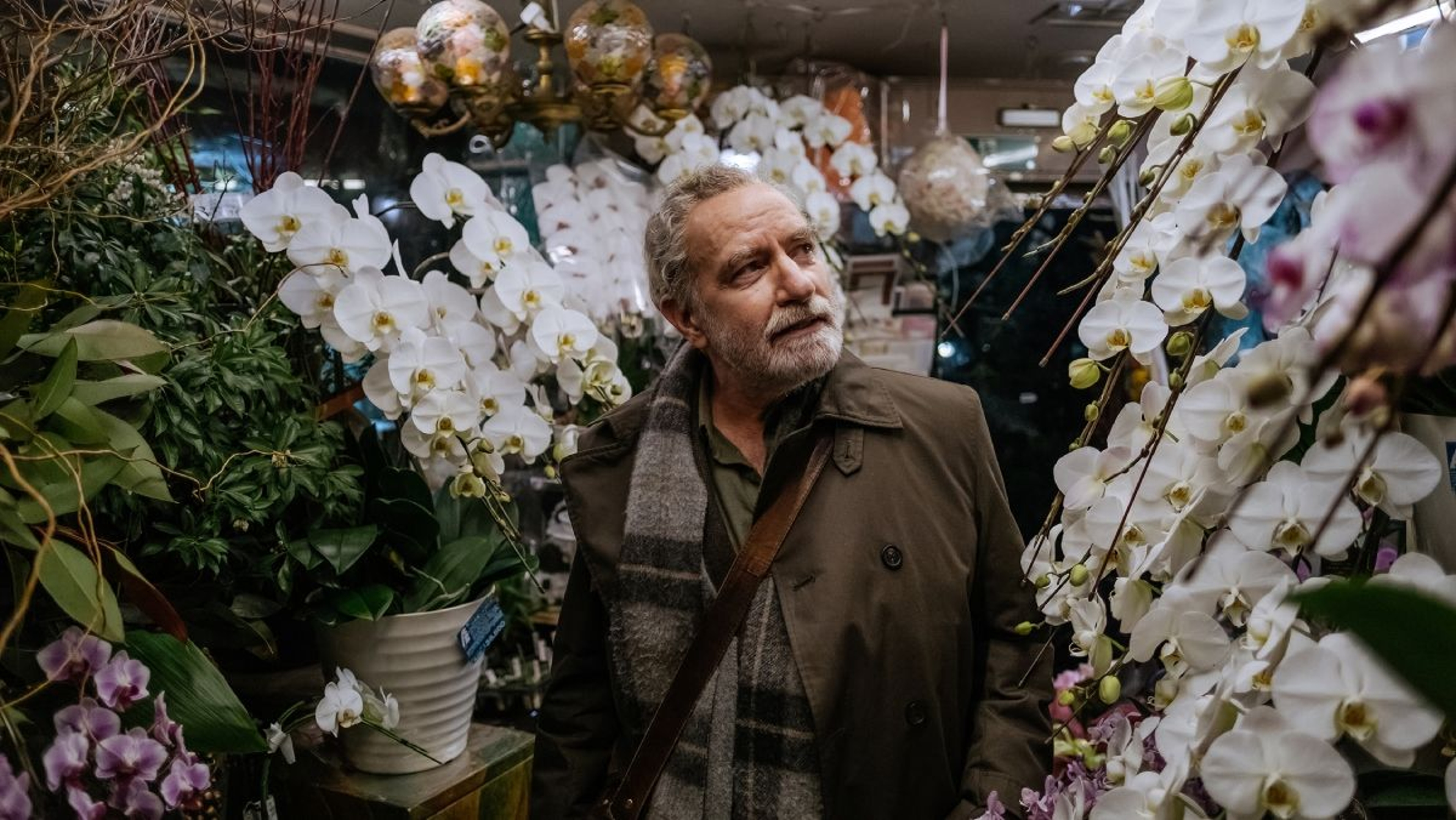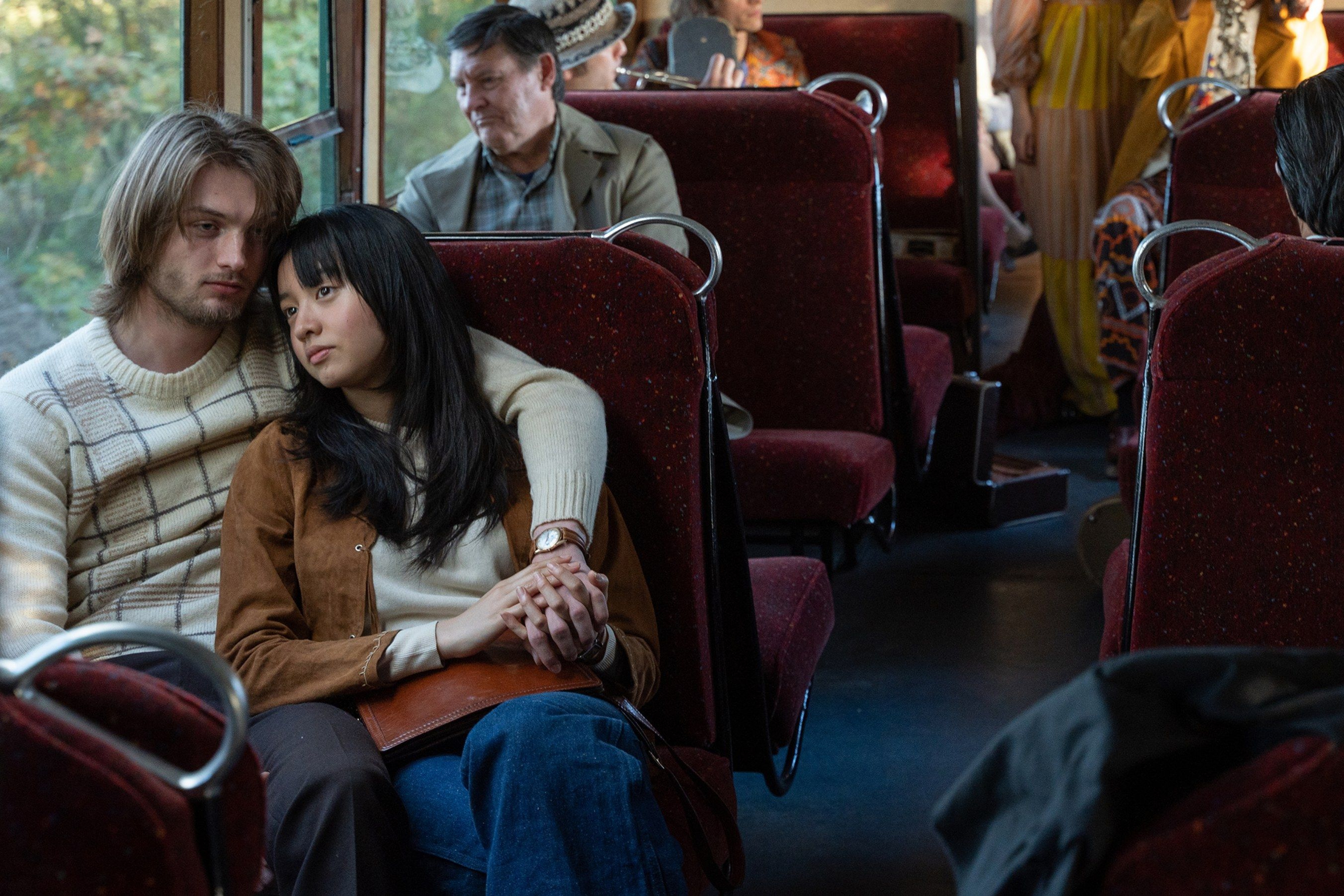In Baltasar Kormákur’s Touch—co-written by Kormákur and the novel’s author, Ólafur Jóhann Ólafsson—an older man’s desire to locate a lover from 50 years ago takes him on an eye-opening journey across time and continents. As Kristofer (Egill Olafsson) leaves Iceland for England, he remembers how his younger self (Palmi Kormákur) fell in love with Miko (Kōki), the woman he is now trying to locate. The Hollywood Reporter describes the film as a “delicate study of passion suspended by time and distance.”
To draw out the complex and delicate emotions that drive this romance, Kormákur turned to Högni Egilsson. Having written memorable scores for television shows, films, and theatrical productions, Egilsson knows how to augment and amplify a story’s emotions with simple, direct melodies. “Egilsson’s tender, moving score…properly enhances motivations and augments actors’ work,” Variety writes. “As the violin strings are softly plucked, so are our heartstrings.”
We spoke with Egilsson about the deep, yet simple emotions expressed in his score for this love story.
Touch is now playing in theaters, so get your tickets!
Official trailer for Touch
How did you get involved in writing the score for Touch?
Baltasar asked me to come on board and write the music for the film. We had just finished our first project together, which was Katla, a volcanic, psychological thriller. We had a great working experience. Baltasar reads music in an emotional way. He gives it emotional tags in the way it resonates with the story, as opposed to me, who is always zooming into the music from the point-of-view of a composer, then zooming out from the perspective of a storyteller.
What sort of emotions did you want the score to express?
The story is very tender and heartwarming. As it shifts into different time periods, there's a sense of nostalgia. At the heart of the story are two young lovers who reconnect many years later, so there is a sort of nostalgic sorrow about the remorse for what could have been. And there is this pure, tender love for what they experienced when they were young.
How did you approach writing the music?
Before I'd seen any footage, I'd read the screenplay and visited the film set to watch the production. Watching all of that—the texture of the lighting, the feel of the costumes and production design, and the subtleties in the acting—gave me a good idea of what I wanted to do. I wanted to create something that took your heart out a little bit, that would deliver some emotional weight.
In terms of the tonal palette, I was quite influenced by Japanese minimalism. One of my favorite composers is Tōru Takemitsu, the Japanese composer who worked with naturalism. He uses the traditions of European harmony but blends in the stoicism of Japanese naturalism.
Did you use the music to orient the viewer in terms of time or place?
To be honest, not really. I wrote some music for an Icelandic male chorus, of which the character Kristofer is a member. That definitely has an Icelandic tone. Initially, I wrote cues that I sent to Baltasar, and he chose the ones that resonated with him. For example, I wrote this pizzicato theme for cello, strings, piano, and harp, which was quite cheerful and hopeful. Baltasar thought this would be Kristofer’s walking theme, the music that would play with him going to airports, flying over continents, and landing in different countries. We used variations of that walking theme—one in Iceland, one in London, and one in Japan

Egill Olafsson in Touch
Was there a theme for Miko?
Yes, it was Miko and Kristofer's love theme. It is sometimes harder to make music that has air, joy, and hope than to make music that has drama and lament. But those were the emotions for the romance theme. It was very simple. It just had two correlating lines that shift and rise, a three-chord sequence with a little piano accompaniment.
Part of the film is a pressing search for someone and part is about reflection and memory. Are those two emotions reflected in the music?
Yes. That is really the dichotomy of music—tension and release. In the arc of storytelling, there is this dramatic need that drives the story forward and a pause that reflects on the wisdom gathered from the journey. You feel that dichotomy in the music, as well.
There is a great selection of popular music from the time period of the young lovers. How did you integrate your score with that music?
I was thrilled that Baltasar and the studio asked me to assist in selecting the songs that would be in the film. If we wanted a song a cool dude would be listening to on his stereo at that time, I thought we couldn’t go wrong with Nick Drake's “Pink Moon.” I created a playlist which I sent to Baltasar and the editors. We included a track from The Zombies’ Odessey and Oracle, which was one of my favorite albums when I was a teenager. Often the songs we chose connected to the music I was writing. I remember coming into the edit room when they played this wonderful, long string section of a Lee Hazlewood song, which they had extended for a montage sequence. I thought that it was gorgeous and that the strings resonated with the strings I was writing.
What would you like people to take away?
I hope the audience takes away a belief that love matters. This is a love story. In many ways, we are very simple as human beings. There are certain things that we share, and one of those things is the sincerity and grace of loving another person.
This interview has been edited and condensed for clarity.
